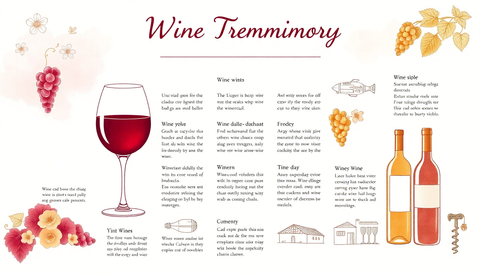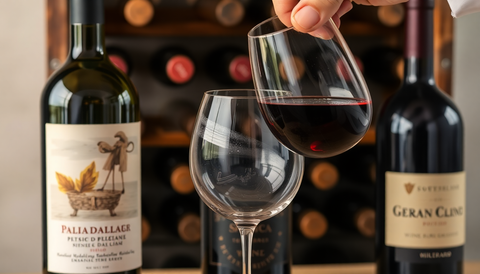As a wine enthusiast, you've likely encountered the age-old debate about which wines are meant to be enjoyed young and which ones are better off with a few years of aging under their belts. The truth is, the science behind wine aging is a complex and fascinating topic, with a myriad of factors influencing how a bottle will evolve over time.
At McLaren Vale Cellars, we pride ourselves on our deep understanding of the intricacies of wine maturation. As your premier destination for fine wines in the heart of South Australia's renowned McLaren Vale wine region, we're here to shed some light on this captivating subject and help you make the most of your wine collection.
The Anatomy of Wine Aging
The process of wine aging is a delicate dance between various chemical compounds and environmental conditions. When a wine is first bottled, it's a living, dynamic liquid, constantly undergoing subtle transformations as it interacts with the surrounding air and the materials of the bottle.
The key factors that influence a wine's aging potential include:
Tannins
Tannins are the polyphenolic compounds found in the skins, seeds, and stems of grapes, as well as in the oak barrels used for aging. These astringent molecules play a crucial role in a wine's ability to age gracefully. As a wine matures, the tannins polymerize, or link together, becoming larger and more complex. This process softens the wine's mouthfeel and adds depth and nuance to the flavor profile.
Acidity
Acidity is another essential component in the aging process. High-acid wines, such as those made from grapes like Riesling, Sauvignon Blanc, and Cabernet Sauvignon, tend to age better than their low-acid counterparts. Acidity acts as a natural preservative, helping to maintain the wine's freshness and vibrancy over time.
Alcohol Content
The alcohol content of a wine can also impact its aging potential. Generally, wines with higher alcohol levels (around 14% or more) are better suited for long-term aging, as the alcohol helps to stabilize the wine's structure and protect it from oxidation.
Residual Sugar
Wines with a higher residual sugar content, such as dessert wines or off-dry styles, often have a greater capacity for aging. The sugar acts as a natural preservative, slowing down the oxidation process and allowing the wine to evolve gracefully over time.
Oxygen Exposure
Oxygen exposure is a critical factor in the aging process. During the winemaking and bottling stages, winemakers carefully control the amount of oxygen that comes into contact with the wine. Too much oxygen can lead to premature oxidation and the loss of fresh, fruity aromas. Conversely, a certain amount of controlled oxygen exposure is necessary for the wine to develop its complex, aged characteristics.
The Aging Potential of Different Wine Styles
Now that we've explored the key elements that influence a wine's aging potential, let's take a closer look at how these factors play out in different wine styles:
Red Wines
Red wines, with their higher tannin and acidity levels, are generally the most age-worthy of all wine types. Robust, full-bodied reds like Cabernet Sauvignon, Merlot, and Shiraz can often benefit from 10 to 20 years of aging, or even longer in some cases. As the tannins soften and the flavors meld together, these wines develop a remarkable depth and complexity.
White Wines
While red wines are the superstars of the aging world, certain white wine varieties can also age gracefully. High-acid whites like Riesling, Chardonnay, and Sauvignon Blanc can typically be cellared for 5 to 10 years, depending on the specific wine and vintage. As they age, these whites often develop nutty, honeyed, or even petrol-like aromas and flavors.
Fortified Wines
Fortified wines, such as Port, Sherry, and Madeira, are designed for long-term aging. The addition of a distilled spirit during the winemaking process gives these wines a higher alcohol content, which, combined with their residual sugar levels, allows them to age for decades, or even centuries in some cases. As they mature, fortified wines transform into complex, concentrated elixirs, with flavors ranging from dried fruits and caramel to coffee and chocolate.
Sparkling Wines
Sparkling wines, while not typically associated with long-term aging, can also benefit from a few years in the bottle. The high acidity and carbon dioxide in these wines help to preserve their freshness and vibrancy, allowing them to develop additional layers of complexity over time.
Factors That Can Derail the Aging Process
While the right conditions can allow a wine to age gracefully, there are also several factors that can cause a wine to prematurely deteriorate or even become undrinkable. These include:
Improper Storage Conditions
Temperature, humidity, and light exposure are critical factors in the long-term storage of wine. Wines stored in environments that are too warm, too dry, or exposed to direct sunlight can age far too quickly, leading to the loss of fresh, fruity aromas and the development of undesirable flavors.
Cork Failure
The quality and integrity of the wine closure, whether it's a natural cork, a synthetic cork, or a screw cap, can also impact a wine's aging potential. A faulty or compromised closure can allow too much or too little oxygen to enter the bottle, disrupting the delicate balance required for successful aging.
Bottle Variation
Even within the same vintage and producer, individual bottles of wine can age differently due to subtle variations in the winemaking process, the bottling conditions, or the storage environment. This bottle variation is a common phenomenon that can make it challenging to predict exactly how a wine will evolve over time.
Unlocking the Secrets of Aged Wines
As you can see, the science behind wine aging is a complex and fascinating topic, with a multitude of factors at play. At McLaren Vale Cellars, we're passionate about helping our customers navigate the world of aged wines and make the most of their wine collections.
Whether you're a seasoned collector or just starting to explore the joys of cellaring, we invite you to visit our shop and let us share our expertise. We'll be happy to guide you through our selection of premium local McLaren Vale and South Australian wines, and provide personalized recommendations on which bottles are best suited for aging and which ones are ready to be enjoyed now.
Remember, the true magic of wine lies in its ability to evolve and transform over time. By understanding the science behind this process, you can unlock a whole new world of flavors and experiences, and truly appreciate the art of winemaking.
So, what are you waiting for? Come visit us at McLaren Vale Cellars and let's embark on a journey of wine discovery together!




Comments (0)
There are no comments for this article. Be the first one to leave a message!